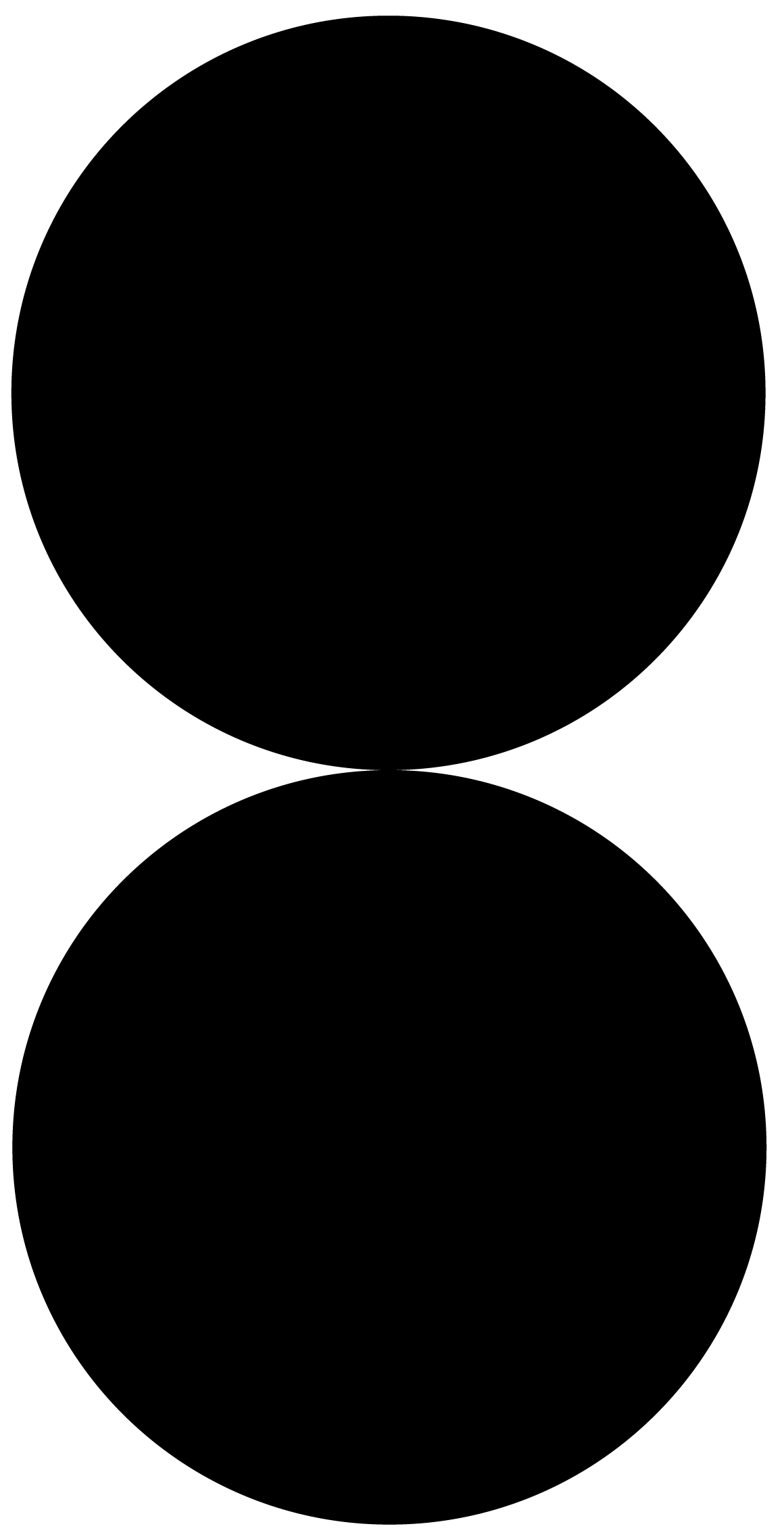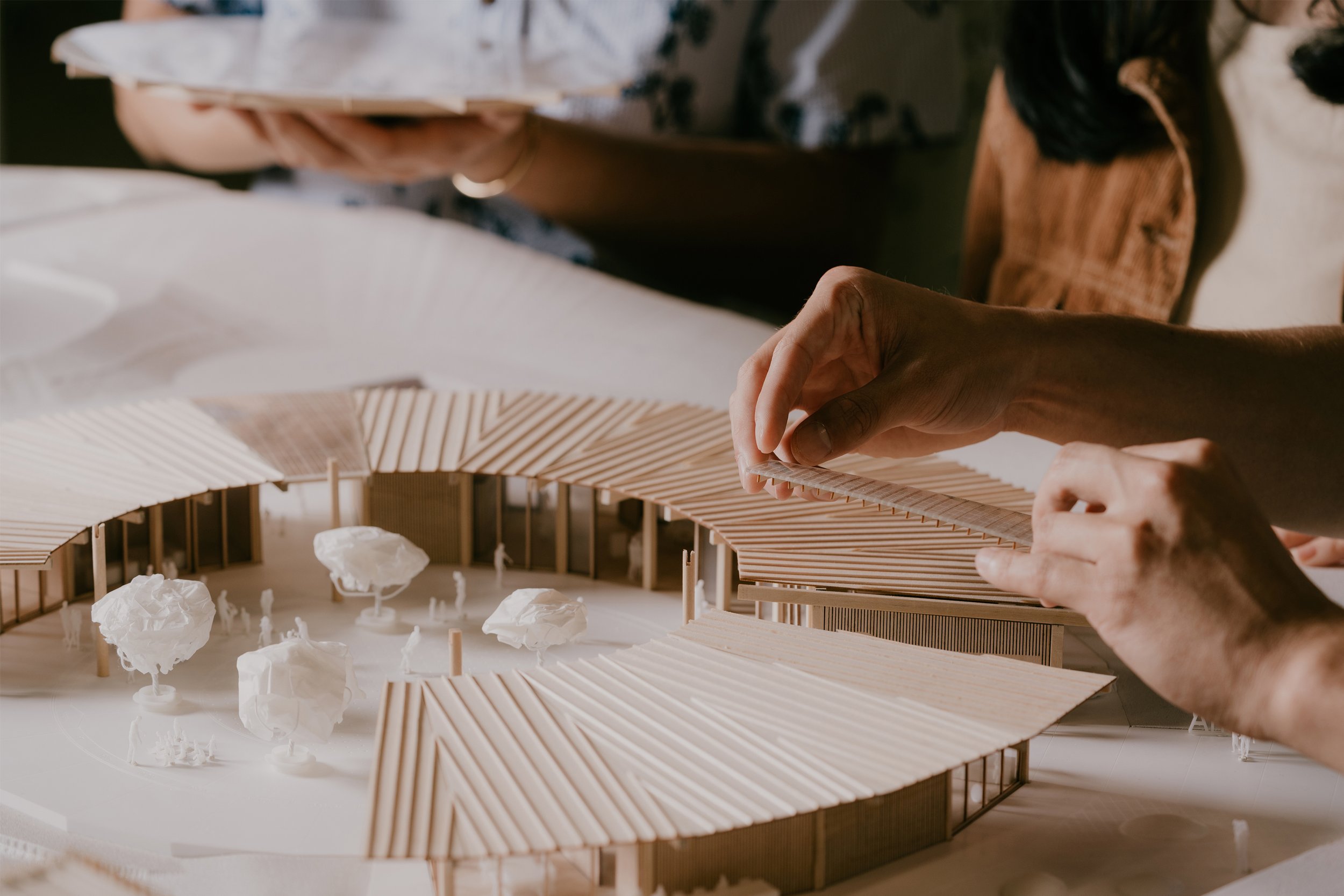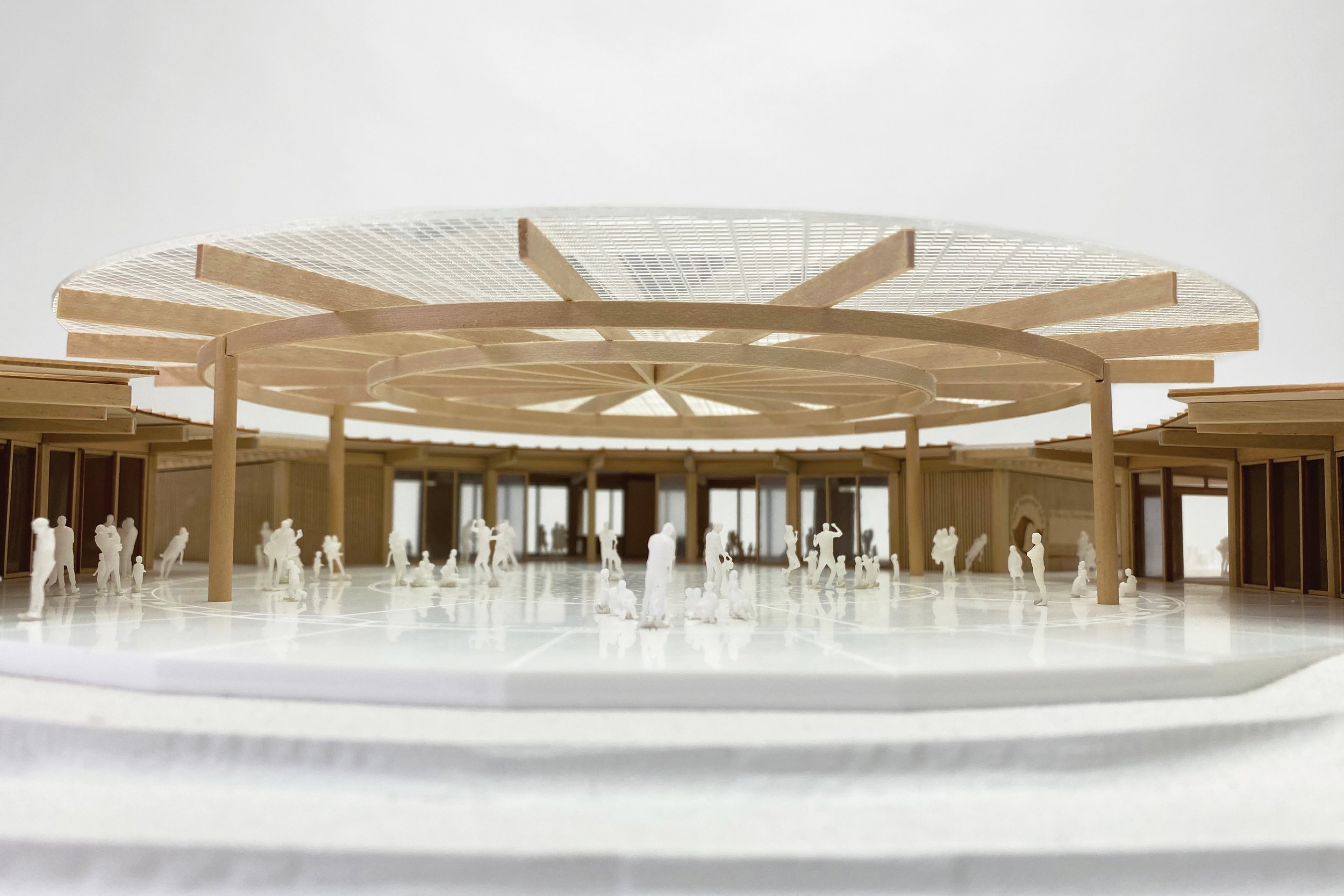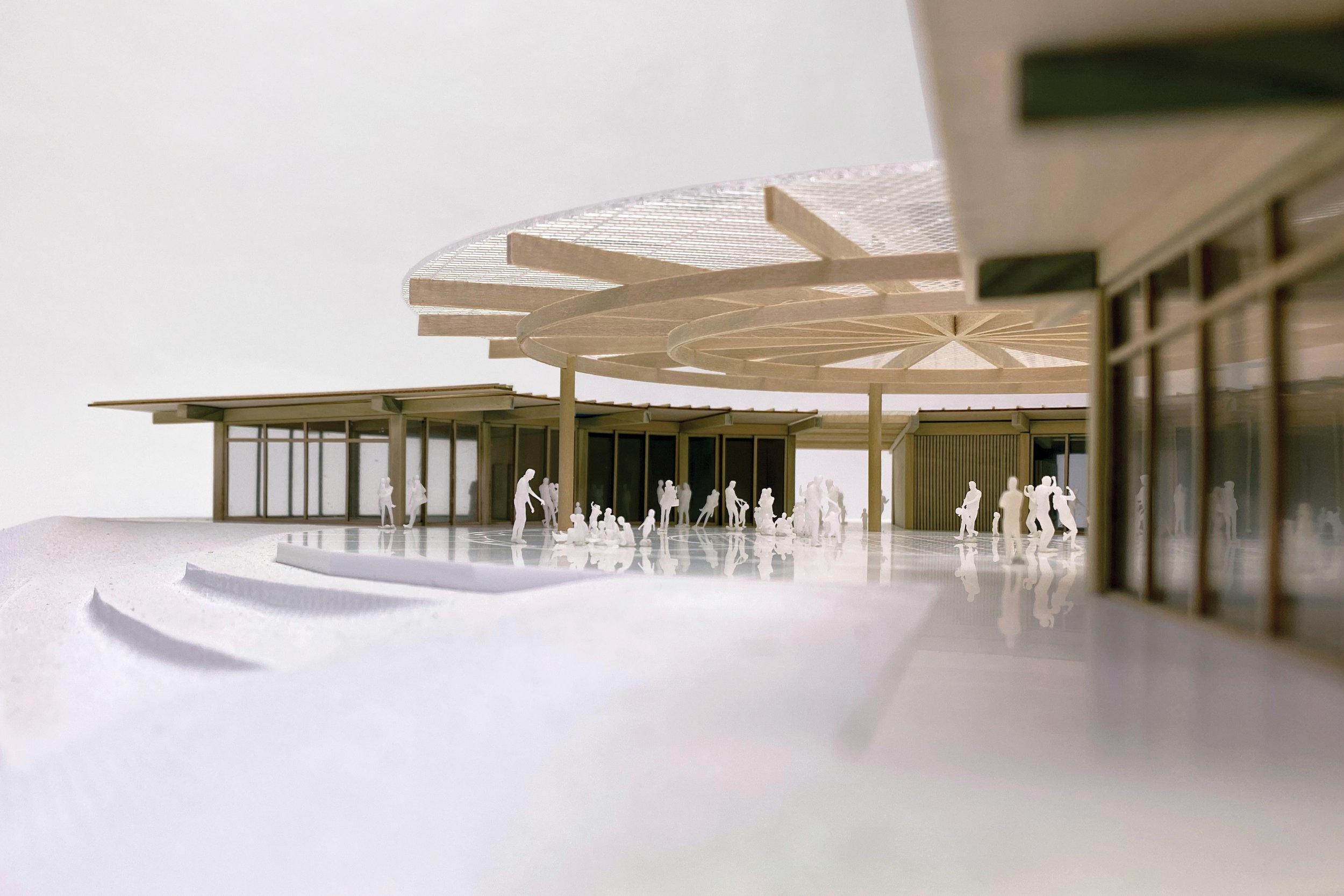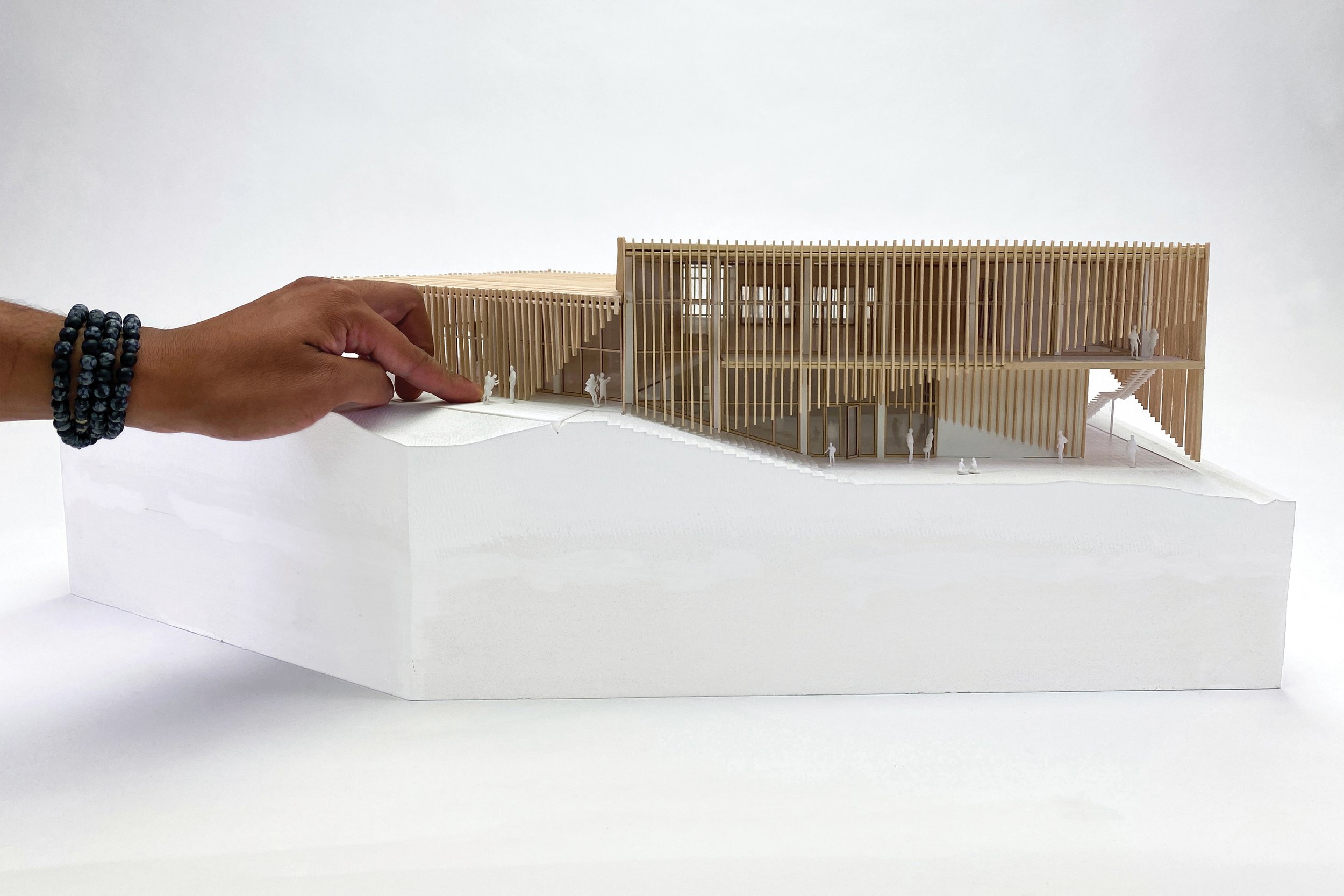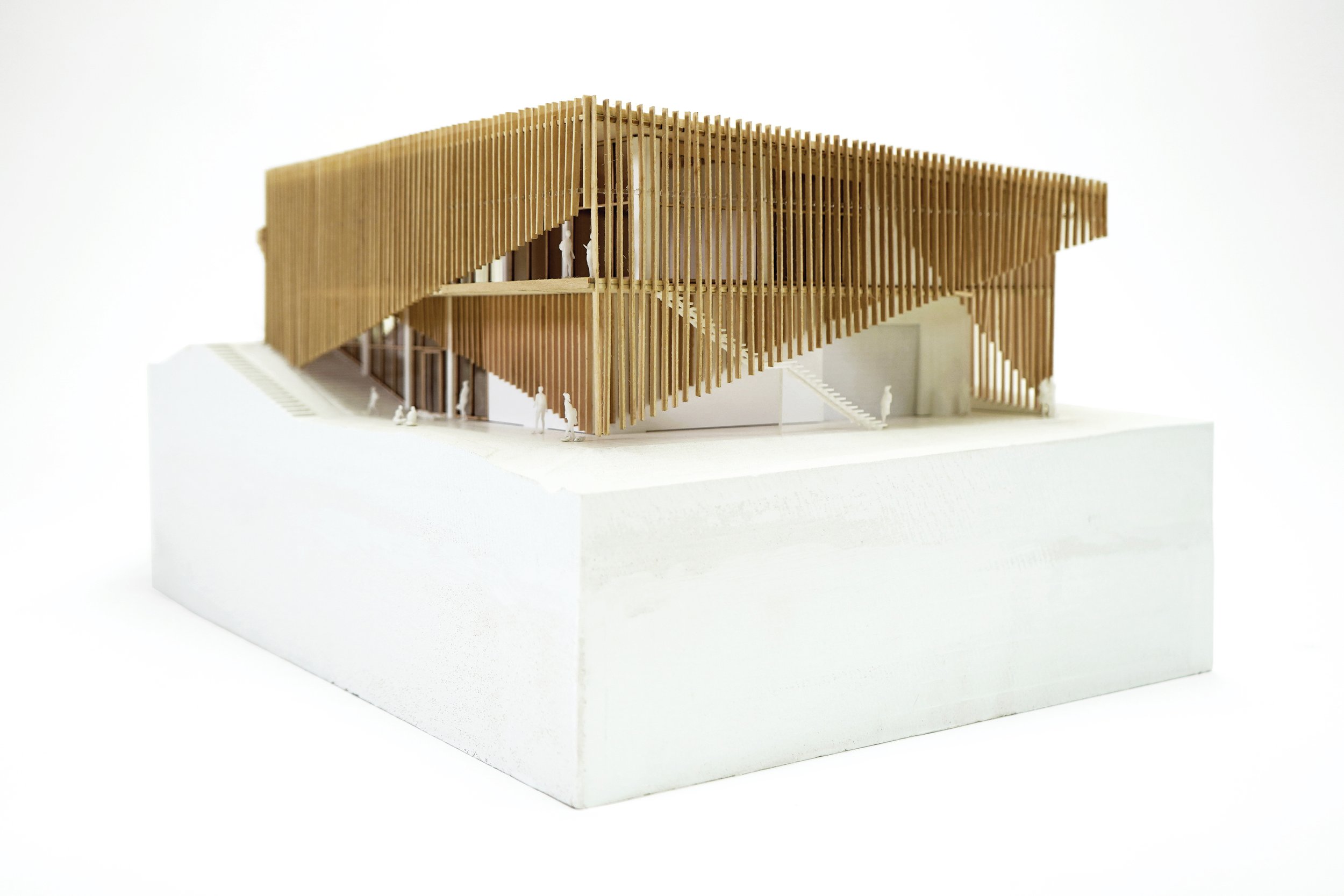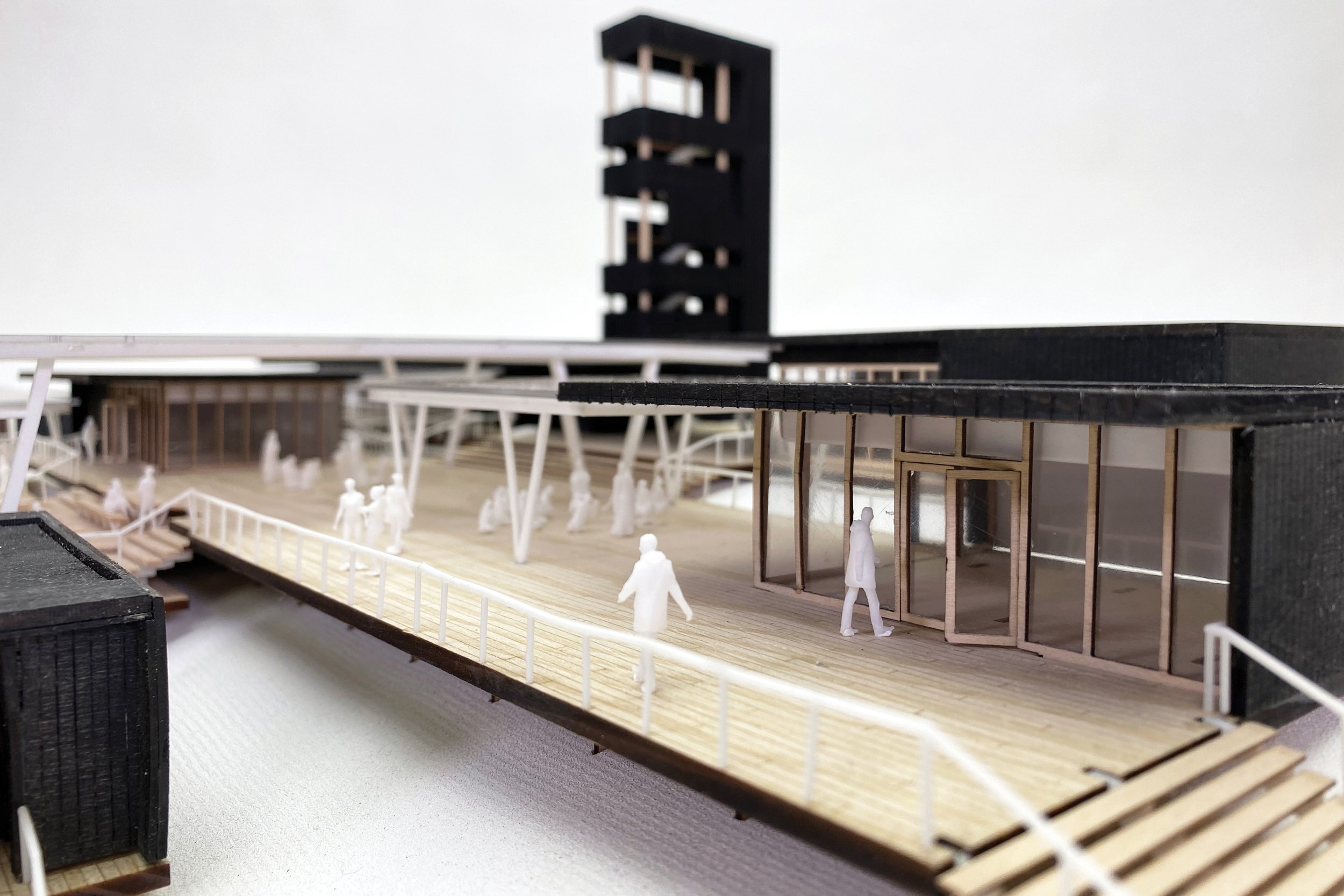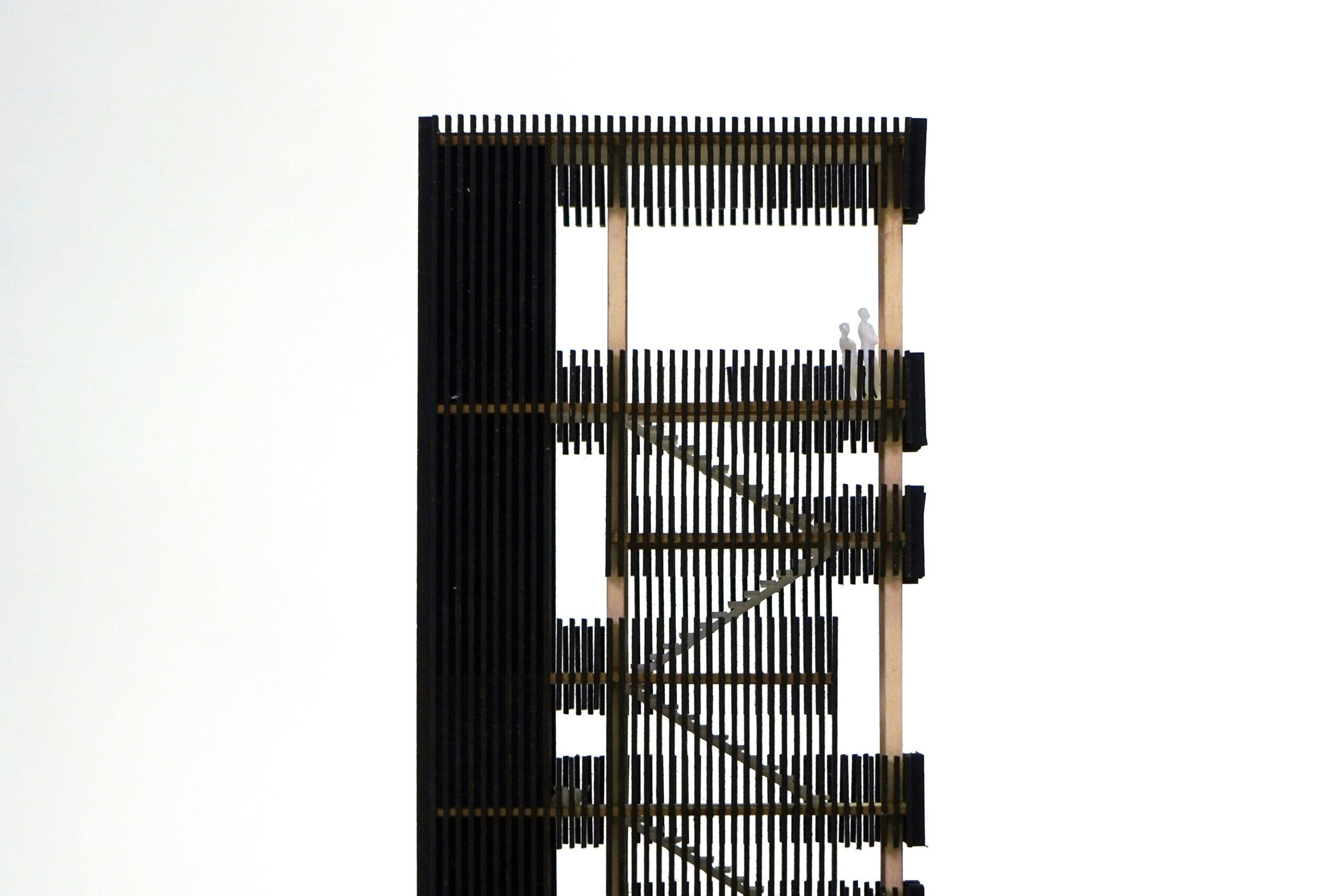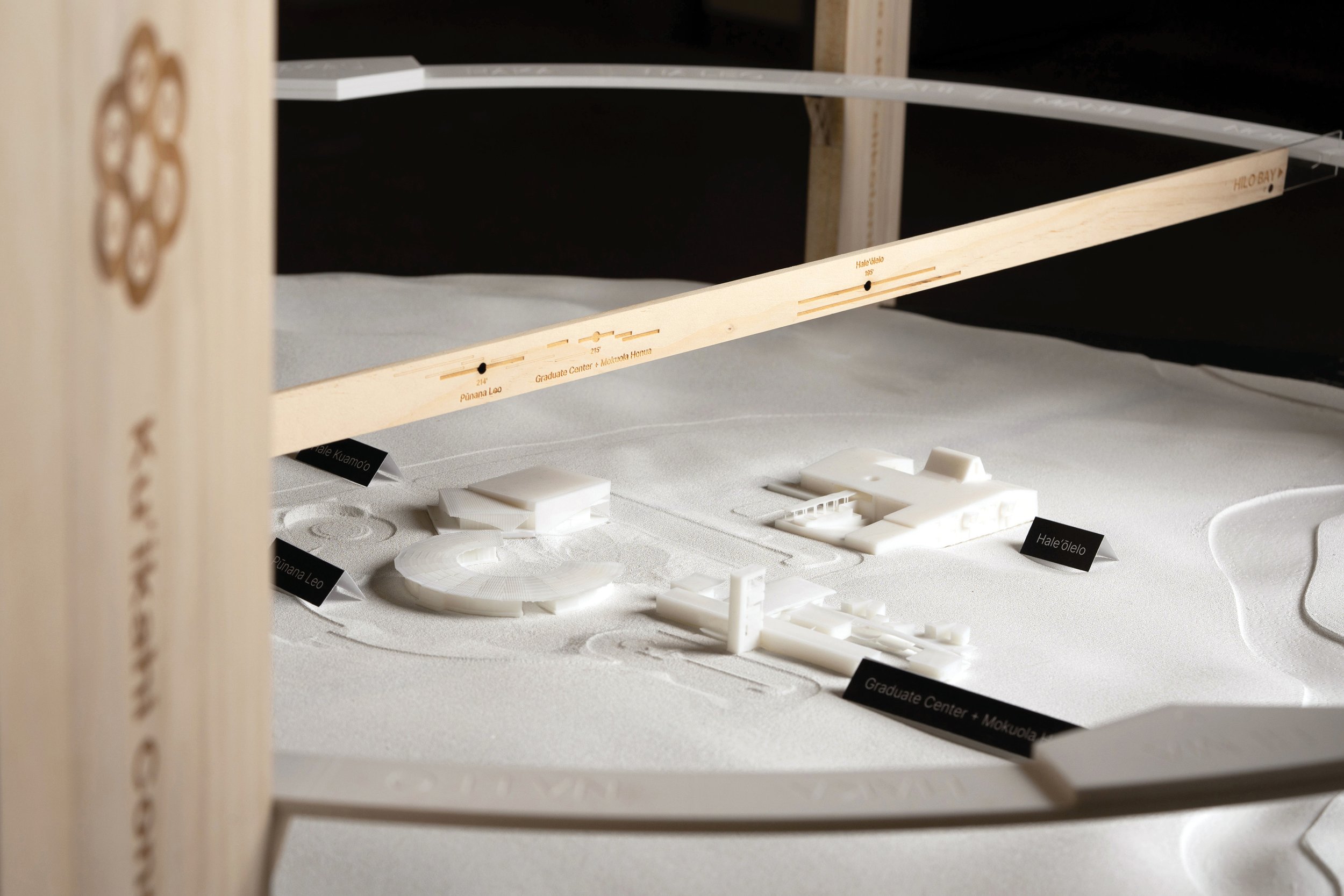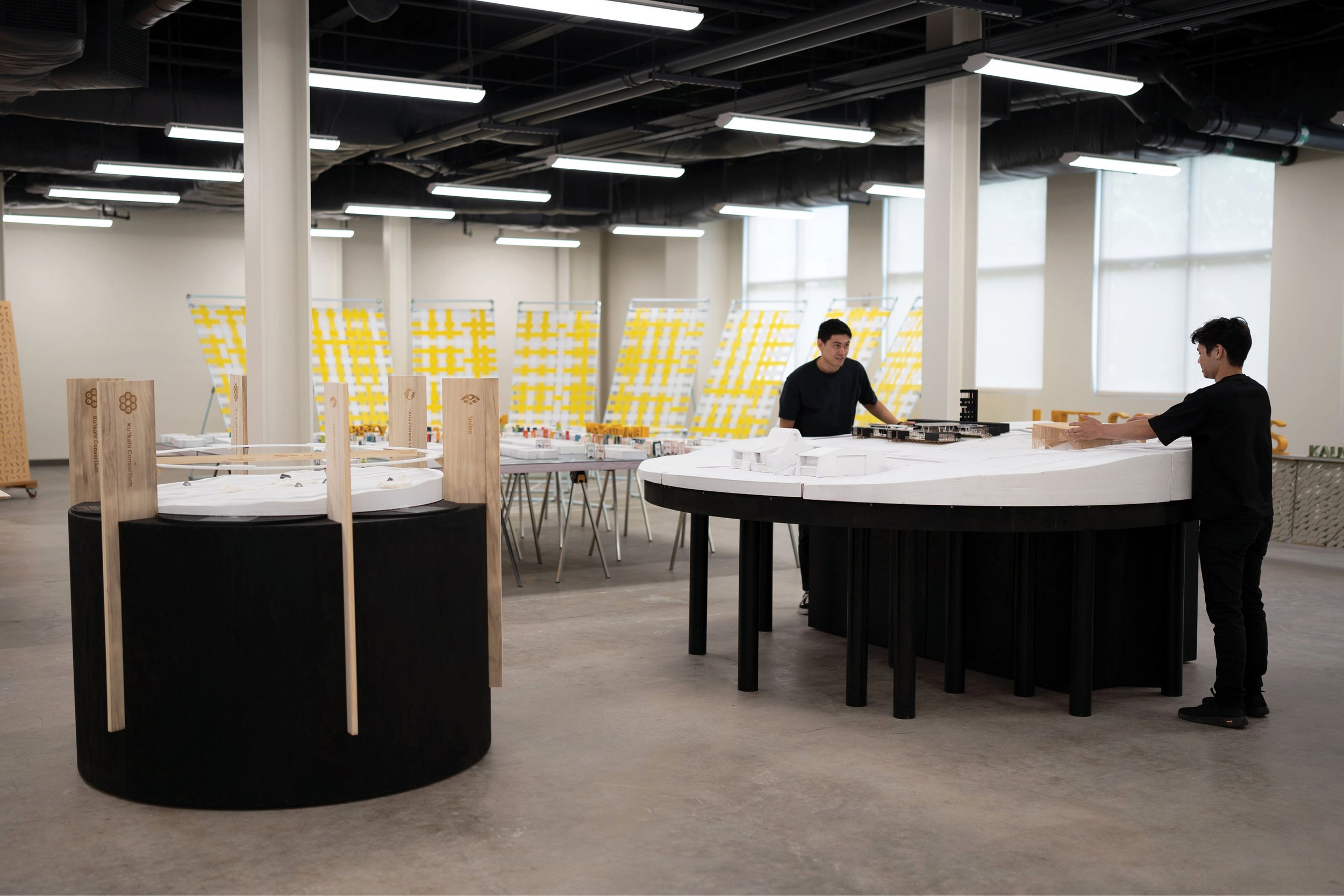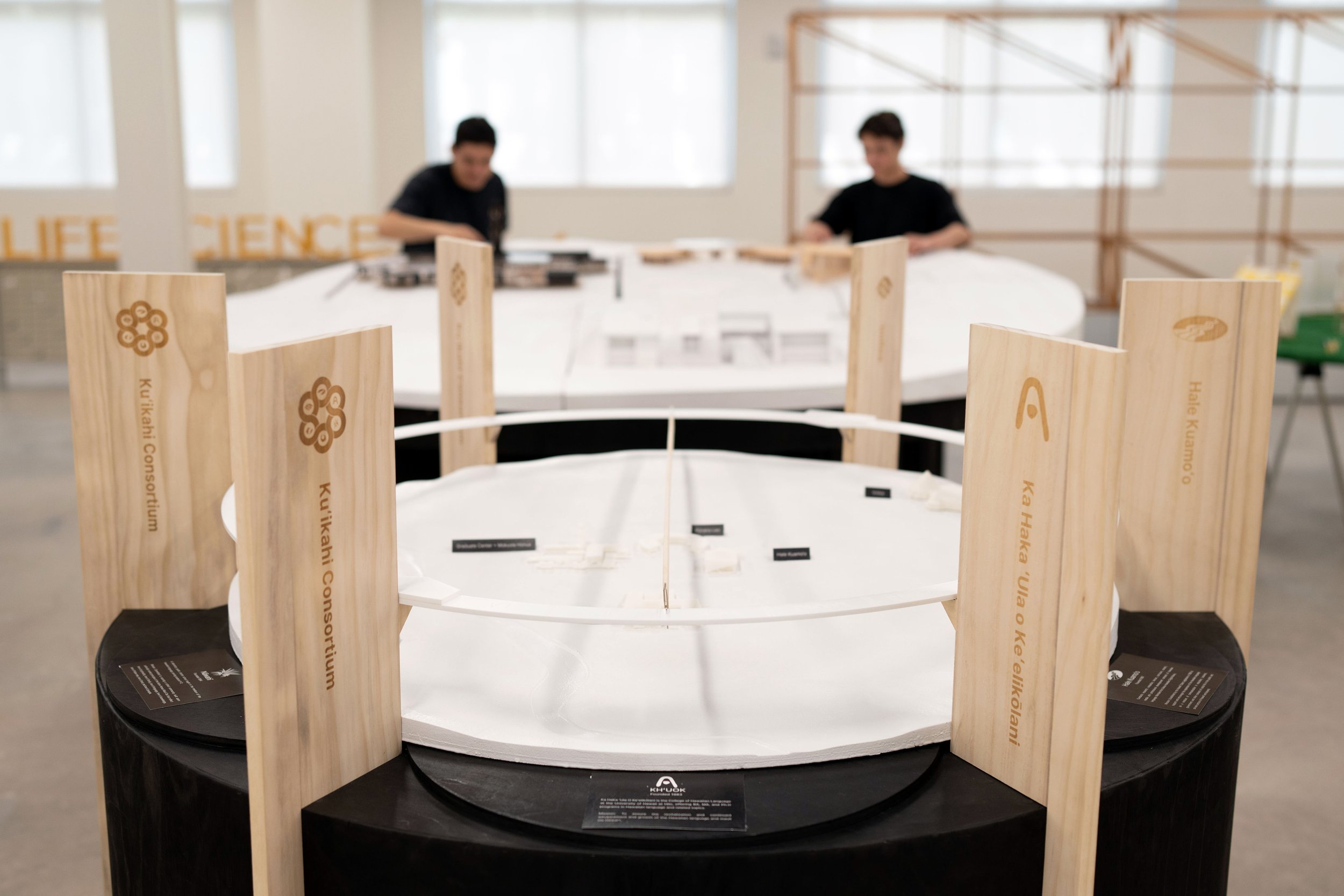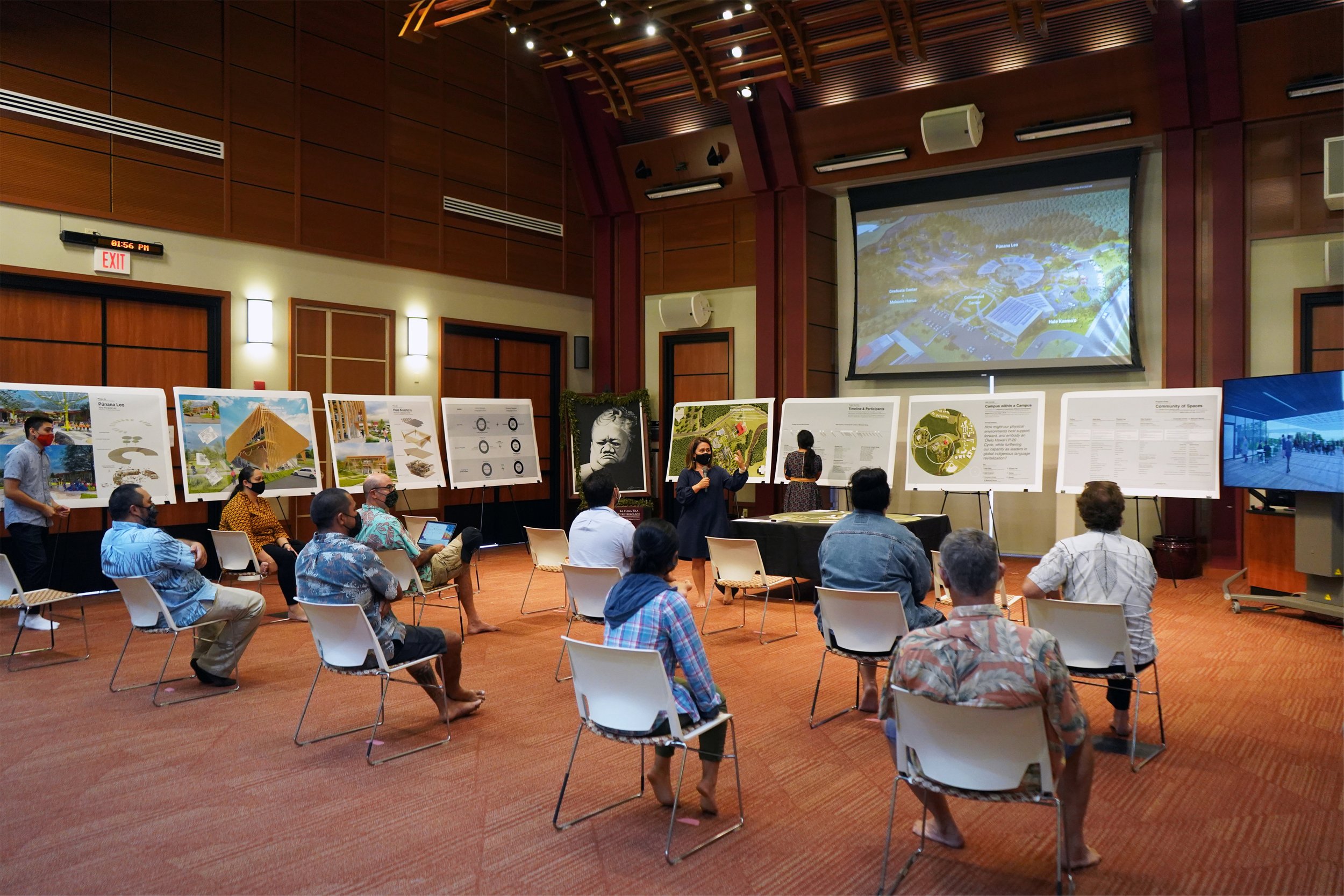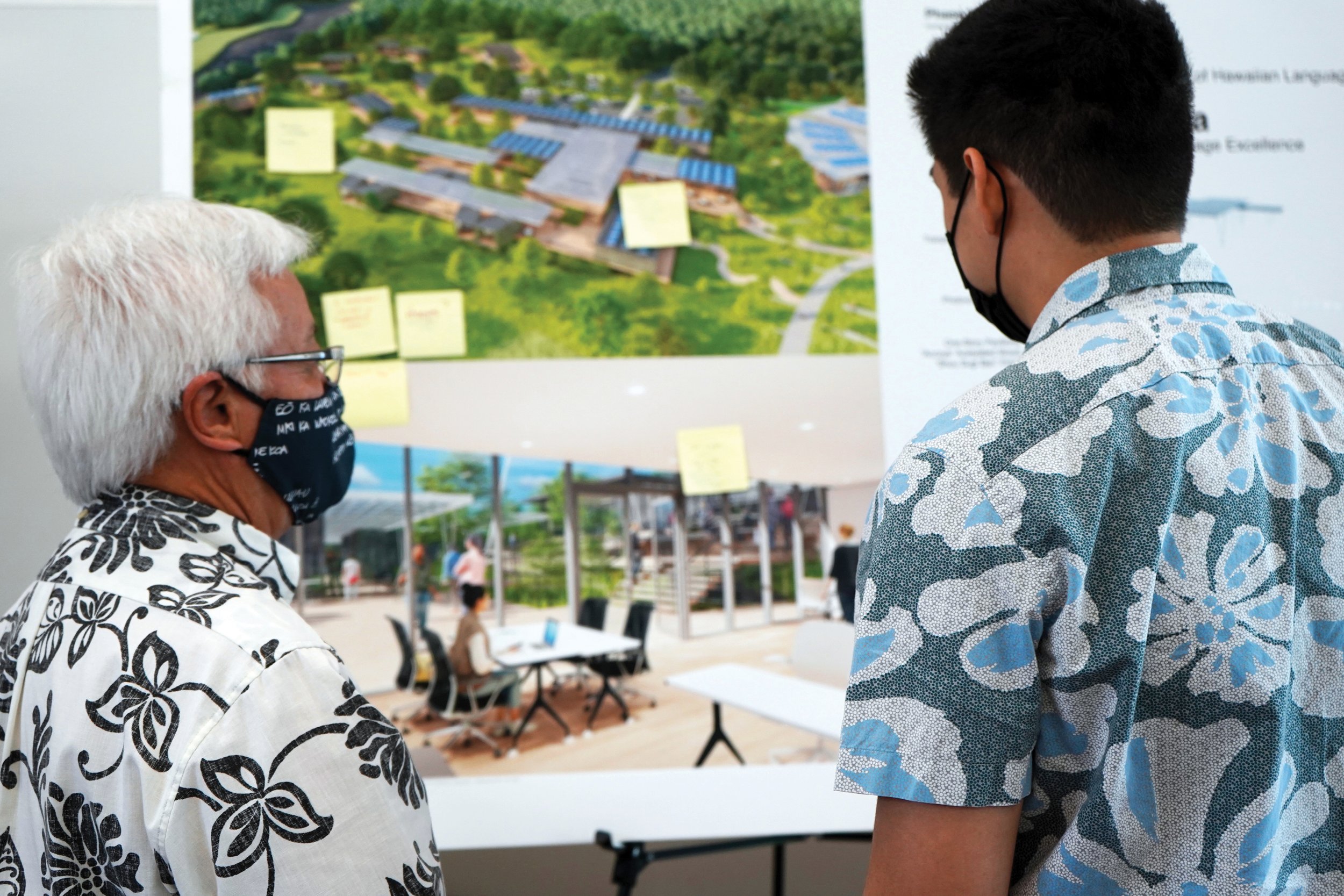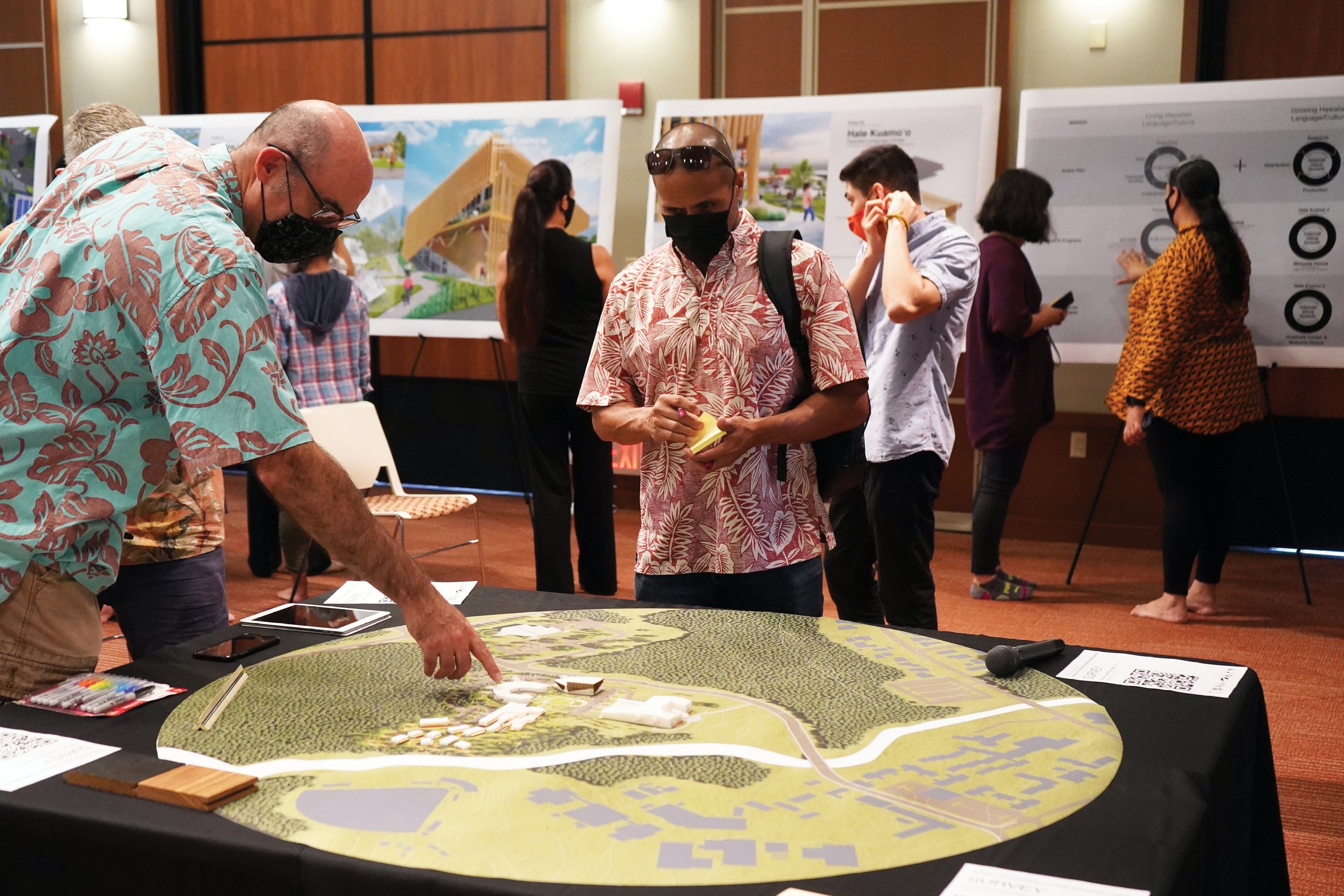PROJECT DESCRIPTION
The Ōlelo Hawai‘i Campus proposes a series of spaces that support the normalization and revitalization of the Hawaiian language. This project was co-developed with representatives from the Hawaiʻi ʻImiloa Institute, a statewide coalition of six Native Hawaiian language organizations, schools, and nonprofits, and supports a complete educational system from preschool to Ph.D., taught entirely in ʻōlelo Hawaiʻi.
The multi-phase project, designed for the University of Hawai‘i at Hilo campus, highlights and aligns ceremonial protocol spaces for three new buildings with Hilo Bay and the sacred Mauna Kea. When complete the Ōlelo Hawai‘i Campus will be the most comprehensive Indigenous language campus in the world.
BACKGROUND
ʻŌlelo Hawaiʻi, the Hawaiian language, was almost lost. After the overthrow of the Hawaiian monarchy, it was outlawed from schools and supplanted by the English language. By the mid-twentieth century, just a few hundred native speakers remained. The Hawaiian Renaissance of the 1970s renewed interest in the Hawaiian language, inspiring a coalition of schools, community groups, and nonprofits that now serve as a global model for indigenous language revitalization.
This project, in collaboration with some of these pioneers, is the culmination of four decades of effort in envisioning, designing, and building the educational and cultural programs needed to support a complete P-25 Hawaiian Indigenous Language Cycle.
AWARDS & DISSEMINATION
2024 ACSA Collaborative Practice Award
2023 Fast Company’s Innovation by Design Awards
2023 AIA Honolulu Award of Excellence - Unbuilt
112th ACSA Annual Meeting: Disrupters on the Edge, “Society+Community: Practices of Decolonization,” Session Presentation, moderated by David T. Fortin, Vancouver, Canada, March 15, 2024.
AIA International Virtual Meeting, December 4, 2023.
MASTER PLAN
Cultural Alignments & Protocol Spaces defining a Campus-within-a-Campus
Planned as a “campus-within-a-campus”, the multi-phase project began with a master planning effort and features three new buildings integrated into a topography shaped by lava flows. The site is organized around a series of physical alignments, responding to the nine cultural pathways of Nā Honua Mauli Ola, developed by members of the Hawaiʻi ʻImiloa Institute.
On the campus grounds, spatial orientation is further supported by the Hawaiian Star Compass. Interpreted by Native Hawaiian navigator Nainoa Thompson, the compass is defined by thirty-two star houses that map the positions and movements of celestial bodies. This system, grounded in Hawaiian traditions, integrates with the understanding of wind directions and ocean wave patterns to aid navigation both on land and at sea.
PRE-SCHOOL
Pūnana Leo
Housing the Preschool and the Hi‘ipēpē Infant Program, the Pūnana Leo o Hilo structure is home to ‘Aha Pūnana Leo’s main Hilo location. It is composed of classrooms, administrative and meeting spaces, a kitchen, and a laundry facility.
A protected courtyard embraces the central piko. Bounded by the thirty-two houses of the Hawaiian Star Compass, the space serves as a focal point for the entire ʻŌlelo Hawaiʻi Campus. The courtyard piko aligns the learning process with land, sea, stars, and ancestral knowledge. Marking the origin point of the education journey, the preschool is surrounded and supported by generations of learners and educators.
PRODUCTION FACILITY
Hale Kuamo‘o
Operating as a teaching practice, student workers will learn alongside professional graphic designers, specialized researchers, curriculum designers, audio/visual experts, and language specialists to build the next generation of Hawaiian language education.
Hale Kuamo‘o operates as a connector between the upper and lower campus and as the physical embodiment of Hale Kuamo‘o’s unique Research-Development-Production-Distribution cycle. The compact, stacked floors open onto one another through a communal exhibition/bookstore/ prototyping lobby and plaza. Each level is visually connected to the surrounding natural landscape and simultaneously provides privacy with a thatch of dynamic sunshades.
LEARNING & HOSTING NETWORK
Graduate Center
& Mokuola Honua
This structure houses the Graduate and Ph.D programs for the Ka Haka ʻUla O Keʻelikōlani College of Hawaiian Language, as well as the Mokuola Honua Global Center for Indigenous Language Excellence.
The collection of lightweight structures follow the current topography and the adjacent Waiākea Stream. The facility is composed of a visitor center, lanai, viewing tower, kitchen and cafe, learning and research facilities, as well as event and semester-based housing. A series of decks, parallel to the natural topography, are lifted above the land on prefabricated trusses set on concrete piers. A collection of one-story structures, protected by photovoltaic canopies, pixelate across interconnected decks and the surrounding landscape.
PAIRED CONSTRUCTS
Zoom-In / Zoom-Out
Two large models were built to showcase proof-of-concept designs for Pūnana Leo, Hale Kuamo‘o, and Graduate Center & Mokuola Honua.
The “Zoom-Out” site model is designed to orient viewers to the overall plan for the mini campus and to illustrate the alignment of the structures with the Hawaiian Star Compass and the axis with the sacred mountain, Mauna Kea.
The “Zoom-In” construct is composed of four models on plinths, one for each new building and the quad they form. A series of clip-on foam massings connect to the plinths and express the surrounding context. This assembly allows the individual models to be claimed by their respective owners after the initial exhibition.
USER RESEARCH
Defining the P-25 Hawaiian Indigenous Language Cycle
Kanaka ‘ōiwi, people of Native Hawaiian ancestry, founded and lead all six programs that complete the P-25 HILC.
Multiple phases of user research, including one-on-one interviews, co-creation workshops, and “talk story” sessions, were held with over fifty Hawaiian language education founders and senior leaders. A similar number of students, parents, program graduates, and community members generously shared their knowledge and experiences during this phase.
The concept and definition for the P-25 Hawaiian Indigenous Language Cycle emerged from these conversations.
Hawaiian Language Partner Organizations
Ka Haka ‘Ula O Ke‘elikolani (KH‘UOK, College of Hawaiian Language at the University of Hawai‘i at Hilo),
‘Aha Pūnana Leo (Hawaiian language preschools)
Hale Kuamo‘o (Hawaiian language curriculum development and research)
Mokuola Honua (Global Center for Indigenous Language Excellence)
‘Imiloa Astronomy Center of Hawai‘i (a part of the University of Hawai‘i at Hilo)
Ke Kula ‘o Nāwahīokalani‘ōpu‘u (Nawahi, Hawaiian language immersion charter school)
Client Leads
Keiki Kawai‘ae‘a, Associate Professor and UH Hilo Interim Vice Chancellor for Academic Affairs
Ka‘iu Kimura, Interim Director of UH Hilo’s KHʻUOK College of Hawaiian Language and Executive Director at the ‘Imiloa Astronomy Center
User Research & UX Design Consultant
Hyunjoo Lee
Production Team
Research Associates ʻEiwa Colburn, Glenn Grande, Jason Hashimoto, Isaac Jang, Charles Palanza, Griffin Ward, Hunter Wells Student Project Assistants Keola Annino, Micah Axalan, Airon Castaneda, Christina Holcom, Keliʻi Kapali, Vivianne Nguyen, Coby Shimabukuro Sanchez, Bryson Tabaniag
Project Type
Design Research & Architectural Design for the University of Hawai‘i at Hilo. Conducted as independent Principal Investigators at the University of Hawai‘i at Mānoa via a contractual mechanism developed by the UHM School of Architecture and the UH Community Design Center.
Photography, Videography & Animation
Photography & Video: Tom Takata
Video Editing, Animations & Motion Graphics: Hunter Wells
All other photography by Strawn Sierralta
See more PROJECTS
